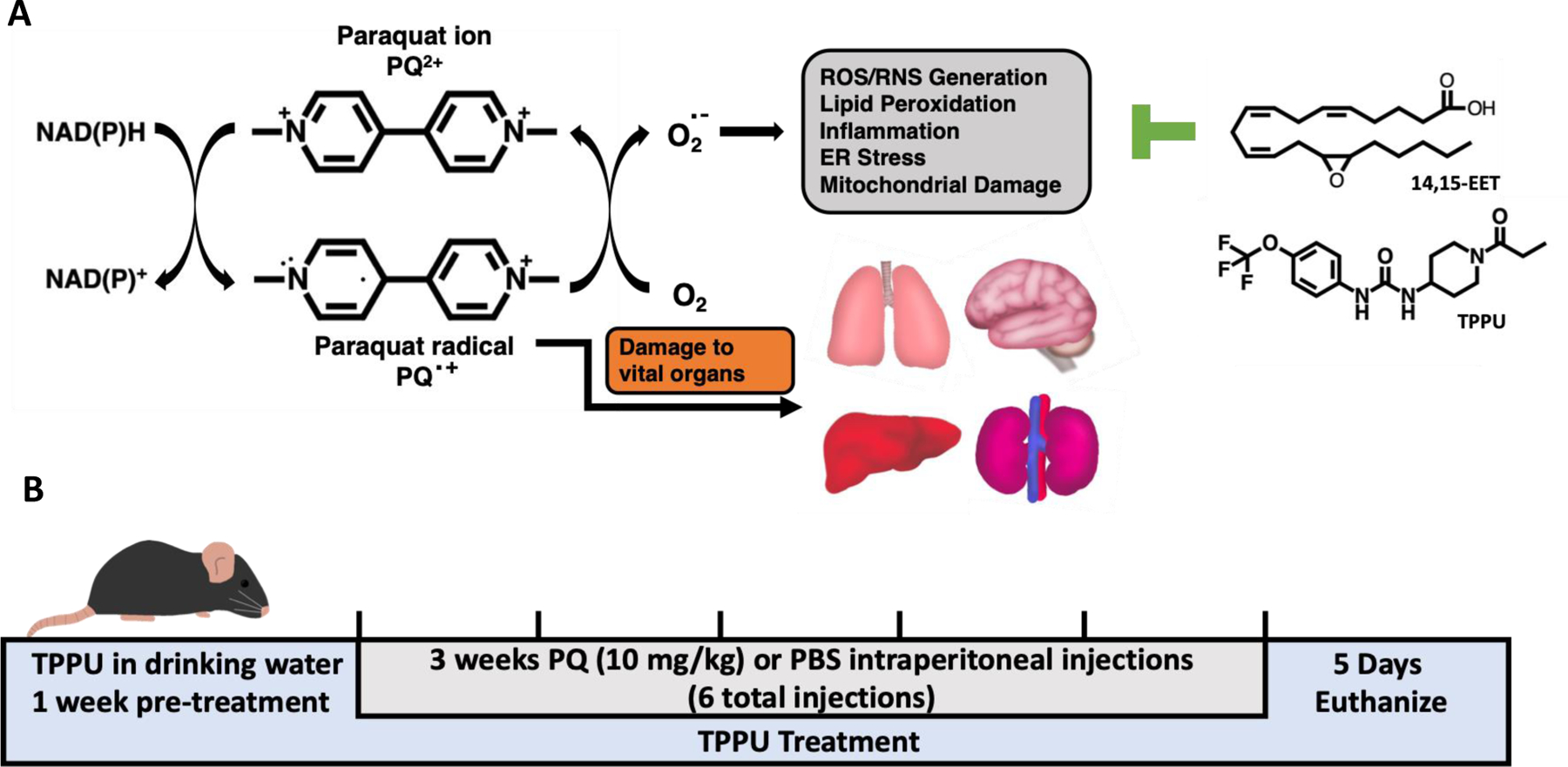Figure 1.

Schematic representations of the A. mechanism of PQ toxicity showing the structure of PQ and its radical form, as well as the 14,15-EET regioisomer and sEH inhibitor TPPU which stabilizes EpFA from hydrolysis by the sEH, and B. timeline of PQ injections in mice. PQ is thought to exert its toxic effects through redox cycling, whereby a PQ ion is converted into a PQ radical through a transfer of electrons from donors such as cytosolic NAD(P)H, which then generates oxygen radical leading to oxidative damage, lipid peroxidation, inflammation, ER stress, mitochondrial damage, and apoptosis. Acute exposure to PQ could result in kidney, liver, or respiratory failure, whereas long-term exposure to PQ may result in pulmonary fibrosis or damage to kidneys and heart. In addition, several studies have shown that PQ also distributes to and accumulates in the brain. Inhibitors of sEH enzyme acting to stabilize EpFA, such as EETs, are known to reduce inflammation, ER stress, pathological fibrosis, and apoptosis in many animal models. Therefore, we hypothesize that the administration of the sEH inhibitor TPPU will mitigate inflammation and ER stress in the brains of mice exposed to PQ.
